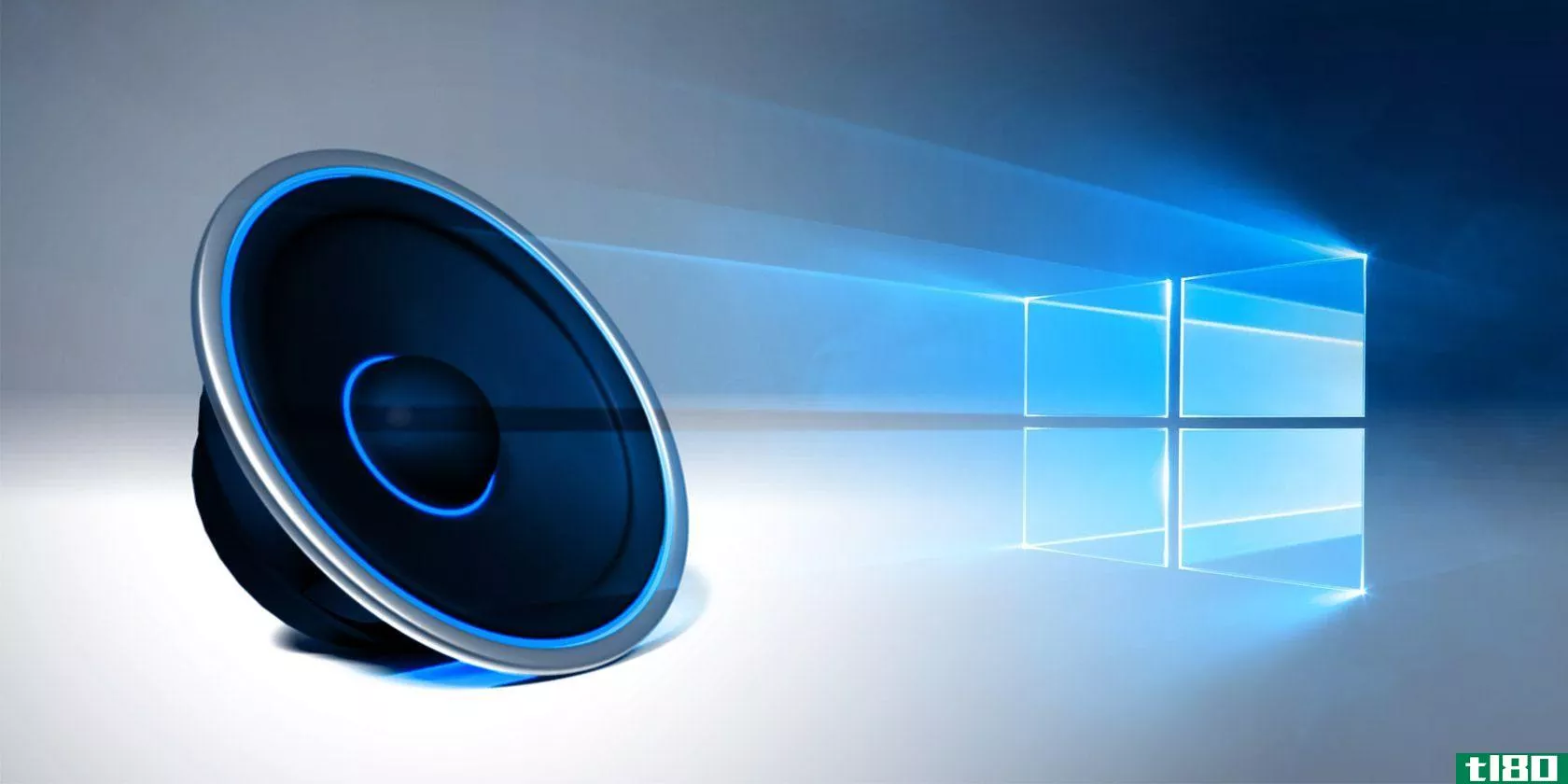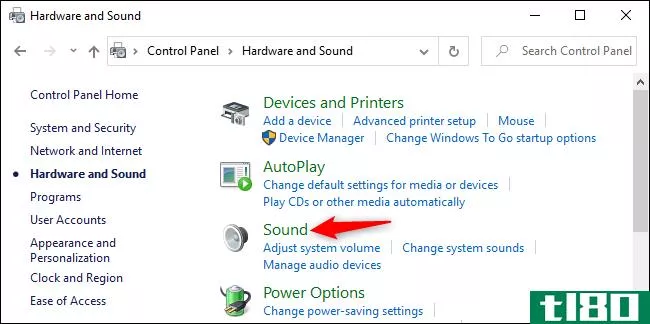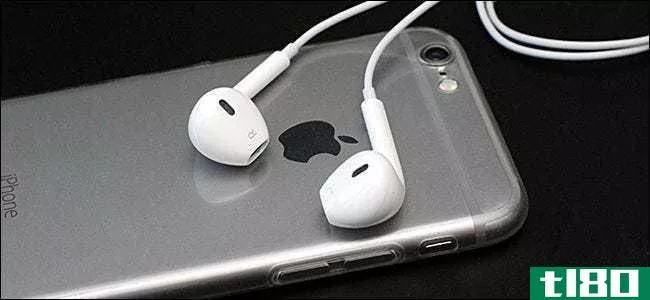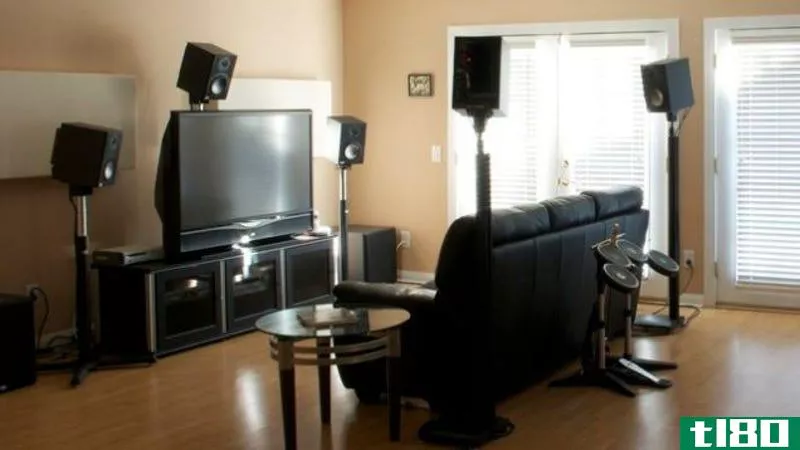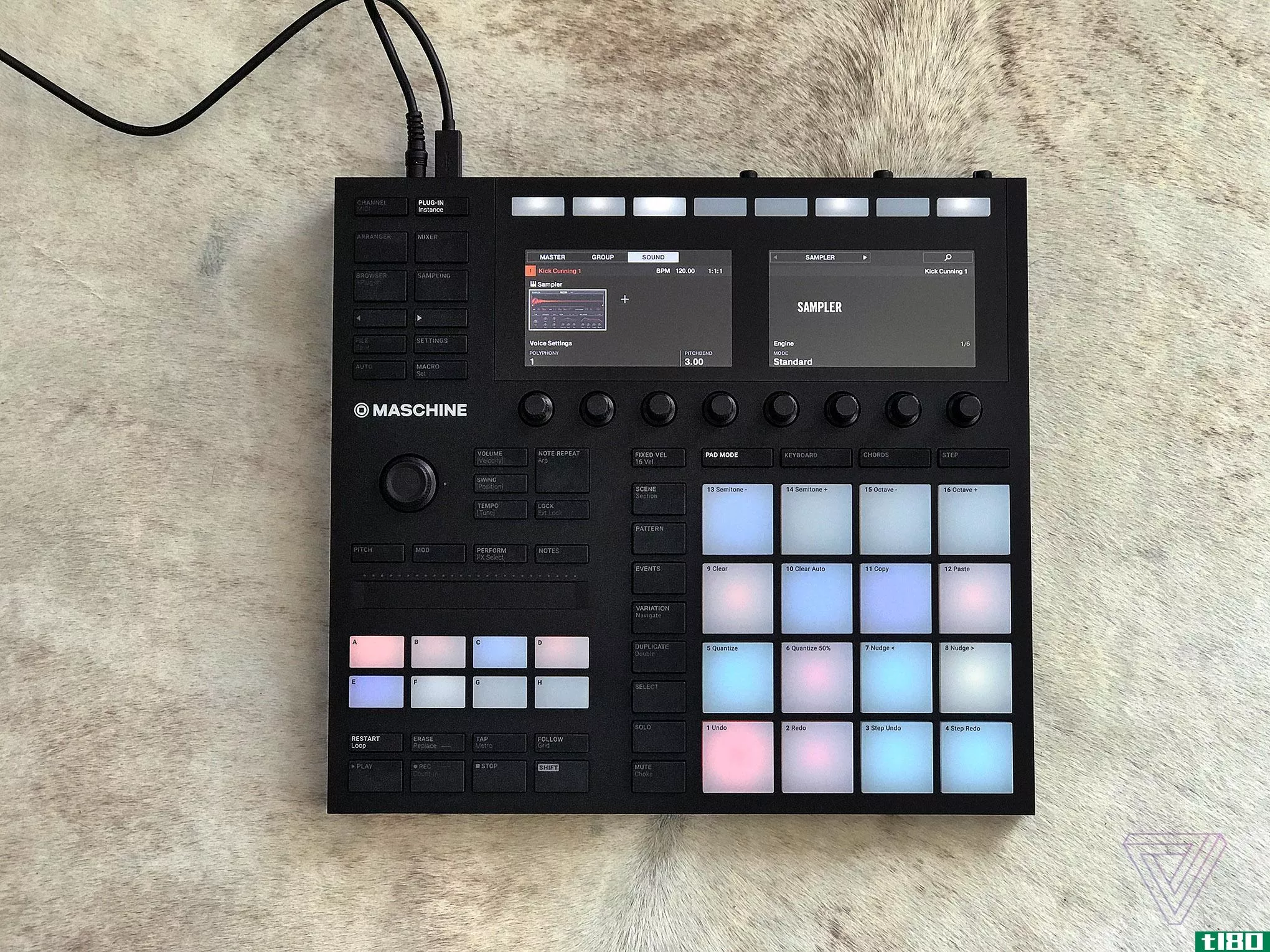我应该通过软件或硬件来调整音量以获得最佳声音吗?
 You can adjust the your speaker volume in-app, operating system-wide, or by the physical controls on your speaker setup. Which method is best for optimum sound?
You can adjust the your speaker volume in-app, operating system-wide, or by the physical controls on your speaker setup. Which method is best for optimum sound?
今天的问答环节是由SuperUser提供的,SuperUser是Stack Exchange的一个分支,它是一个由Q&a网站组成的社区驱动分组。
问题
超级用户读者QWY提出了以下问题:
If music isn’t loud enough, how do I get the best quality (even if the difference is in fact so **all it’s negligible)?
- By making the music louder in my music player, game or other sound-producing software program?
- By raising the volume at the operating system level (for instance, by clicking the speaker icon in the Windows notification area and turning the volume up)?
- By turning the volume up on the amplifier or speakers that are attached to your computer, and thus changing the volume on the hardware?
Does programs vs. OS matter? Does software vs. hardware matter?
让我们把事情搞清楚:是在扬声器处调高音量还是在电脑的设置范围内调高音量更好?
答案
超级用户贡献者Indrek插话回答了这个问题:
Program vs. OS generally doesn’t matter. What matters is whether you’re adjusting volume in software or in hardware.
Reducing volume in software is basically equivalent to reducing the bit depth. In digital audio, the signal is split up into distinct samples (taken thousands of times per second), and bit depth is the number of bits that are used to describe each sample. Attenuating a signal is done by multiplying each sample by a number less than one, with the result being that you’re no longer using the full resolution to describe the audio, resulting in reduced dynamic range and signal-to-noise ratio. Specifically, every 6 dB of attenuation is equivalent to reducing the bit depth by one. If you started with, say, 16-bit audio (standard for audio CDs) and reduced the volume by 12 dB, you’d effectively be listening to 14-bit audio instead. Turn the volume down too much and quality will start to suffer noticeably.
Another issue is that these calculati*** will often result in rounding errors, due to the original value of the sample not being a multiple of the factor by which you’re dividing the samples. This further degrades the audio quality by introducing what’s basically quantisation noise. Again, this mostly happens at lower volume levels. Different programs might use slightly different algorithms for attenuating the signal and resolving those rounding errors, which means there might be some difference in the resulting audible signal between, say, an audio player and the OS, but that doesn’t change the fact that in all cases you’re still reducing bit depth and essentially wasting a portion of the bandwidth on tran**itting zeroes instead of useful information.
This PDF has more information and some excellent illustrati*** if you’re interested in learning more.
The result of reducing the volume in hardware depends on how the volume control is implemented. If it’s digital, then the effect is much the same as reducing the volume in software, so there’s probably little to no difference in which one you use, in terms of audio quality.
Ideally, you should output audio from your computer at full volume, so as to get the highest resolution (bit depth) possible, and then have an ****ogue volume control as one of the last things in front of the speakers. Assuming all the devices in your signal path are of more or less comparable quality (i.e. you’re not pairing a cheap low-end amplifier with a high-end digital source and DAC), that should give the best audio quality.
@Joren posted a good question in the comments:
So if I want to set software volume control to max, how do I deal with my ****og controls suddenly having a super tiny usable range? (Because even turning the ****og volume to half is way too loud.)
This can be a problem when the volume control is part of an amplifier, which is probably the case with most computer setups. Since an amplifier’s job is to, as the name suggests, amplify, this means that the volume control’s gain ranges from 0 to more than 1 (often much more), and by the time you’ve turned the volume control to the halfway point, you’re probably no longer attenuating, but actually amplifying the signal beyond the levels you set in software.
There’s a couple of soluti*** to this:
- Get a passive attenuator. Since it doesn’t amplify the signal, its gain ranges from 0 to 1, which gives you a much larger usable range.
- Have two ****ogue volume controls. If your power amplifier or speakers have a volume or input trim control, that will work great. Use that to set a master volume level so that your regular volume control’s usable range is maximised.
- If the previous two aren’t possible or feasible, simply turn down the volume at the OS level, until you’ve reached the best compromise between the usable range on the ****ogue volume control and audio quality. Keep individual programs at 100% so as to avoid several bit depth reducti*** in a row. Hopefully there won’t be a noticeable loss in audio quality. Or if there is, then I’d probably start looking at getting a new amplifier that doesn’t have as sensitive inputs, or better yet, has a way to adjust input gain.
@Lyman Enders Knowles pointed out in the comments that the issue of bit depth reduction does not apply to modern operating systems. Specifically, starting with Vista, Windows automatically upsamples all audio streams to 32-bit floating point before doing any attenuation. This means that, however low you turn the volume, there should be no effective loss of resolution. Still, eventually the audio has to be downconverted (to 16-bit, or 24-bit if the DAC supports that), which will introduce some quantisation errors. Also, attenuating first and amplifying later will increase the noise floor, so the advice to keep software levels at 100% and attenuate in hardware, as close to the end of your audio chain as possible, still stands.
有什么要补充的解释吗?在评论中发出声音。想从其他精通技术的Stack Exchange用户那里了解更多答案吗?在这里查看完整的讨论主题。
- 发表于 2021-04-12 03:57
- 阅读 ( 243 )
- 分类:互联网
你可能感兴趣的文章
想让你的音频听起来更好吗?以下是五大秘诀
...单中查看可用的技巧和工具,但如果您要了解Audacity,您应该真正熟悉基本的编辑工具。 ...
- 发布于 2021-03-17 05:21
- 阅读 ( 168 )
听上去你的mac不工作?轻松解决音频问题
...得失真(噼啪作响或嘈杂),那么重新启动coreaudiod过程应该可以解决您的问题。这有效地重置了Mac上的声音,您可以通过两种方式退出进程。 ...
- 发布于 2021-03-18 16:27
- 阅读 ( 354 )
如何改善或修复windows10中的音质
... 如果音频有问题,应该尝试更新音频驱动程序。一般来说,你应该让你的驱动程序保持最新,这样你的硬件才能在最新版本的Windows10中正常工作。 ...
- 发布于 2021-03-25 09:38
- 阅读 ( 260 )
从三星galaxy buds live获得最大收益的10个技巧
... 这听起来很明显,但你应该首先确保你的花蕾佩戴正确。他们的设计与众不同,毕竟不同于Galaxy Buds和Buds Plus。使用不当会降低音质,使触摸功能失效。 ...
- 发布于 2021-03-30 13:28
- 阅读 ( 272 )
如何在spotify中获得最佳音质
...n。 绿色滑块表示设置为打开,而灰色滑块表示关闭。这应该意味着,对于某些类型的音频,你将能够听音乐的艺术家打算在充分,不受限制的音量。 如果希望保持卷规格化处于打开状态,可以更改设置的影响。单击或轻触“...
- 发布于 2021-04-02 04:02
- 阅读 ( 255 )
如何降低pc上的麦克风背景噪音
...。 清晰录音的基本技巧 在深入研究软件功能之前,您应该遵循一些基本的最佳实践,以获得更清晰的音频记录。以下是一些快速提示: 戴上耳机:如果您的麦克风接收到扬声器的噪音,请戴上耳机以消除回声。 使用专用麦...
- 发布于 2021-04-02 06:13
- 阅读 ( 191 )
如何解决windows10中的声音问题
... 接下来,单击滑块左侧的扬声器图标取消静音。 您还应该验证硬件端的声音是否静音或关小。例如,您的扬声器可能有音量按钮,或者它们可能被意外地从电脑或电源插座拔下。 同样地,您的耳机或麦克风可能包含调低音量...
- 发布于 2021-04-03 01:47
- 阅读 ( 225 )
为什么我的高清电视上的对话如此安静?
...际扬声器配置(例如,如果您只是使用您的电视,那么它应该设置为“2.0”或“正常立体声”或类似)。 启用动态范围压缩 通常,压缩音频是坏事,如果你喜欢丰富和动态范围。但有时,动态范围必须排在不叫醒邻居的第二位...
- 发布于 2021-04-07 12:04
- 阅读 ( 152 )
如何限制iphone、ipod和其他苹果设备的音量(并保护孩子的听力)
...长时间的暴露下造成永久性听力损失。作为成年人,我们应该足够聪明,不去炸我们的耳膜,但至少如果我们足够笨,这样做,我们已经足够大,可以理解后果。 相关:为什么你的孩子应该使用音量限制耳机 正如我们在最近的...
- 发布于 2021-04-10 08:08
- 阅读 ( 197 )
如何不花一分钱就能从家庭影院获得更多
...电视时考虑过的(希望如此),但如果你没有考虑过,你应该考虑一下你的电视与座位的距离和视角是否最佳。关于最佳观看距离这个问题,你可以找到很多不同的观点,但决定最佳观看距离的最简单方法是把电视的对角线尺寸...
- 发布于 2021-05-19 16:31
- 阅读 ( 133 )


